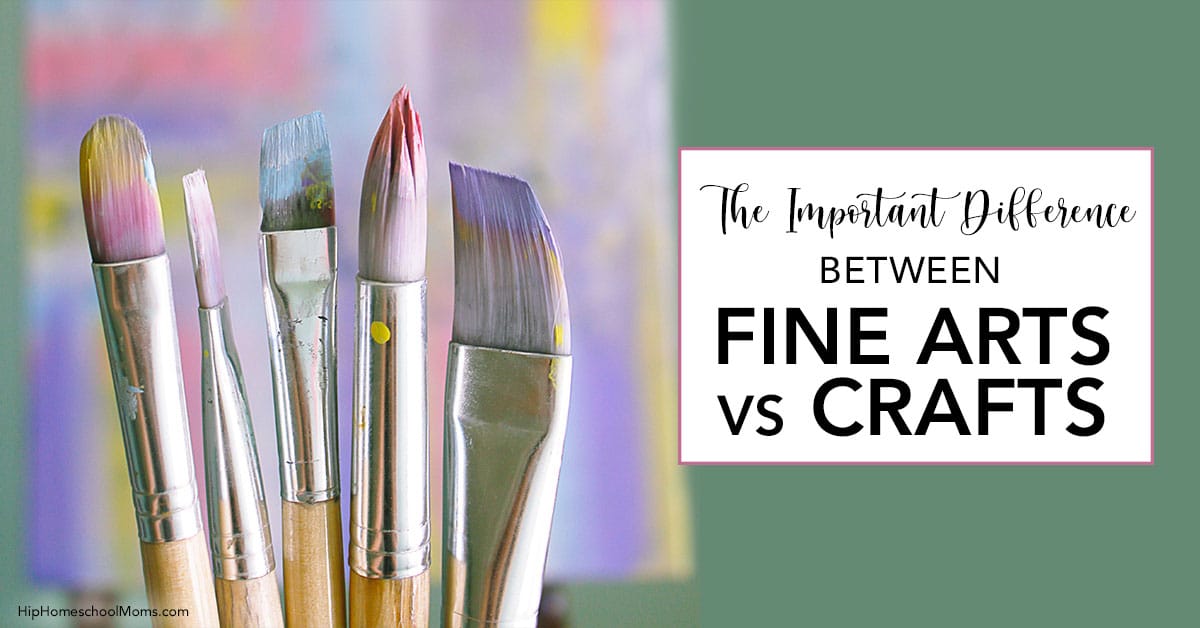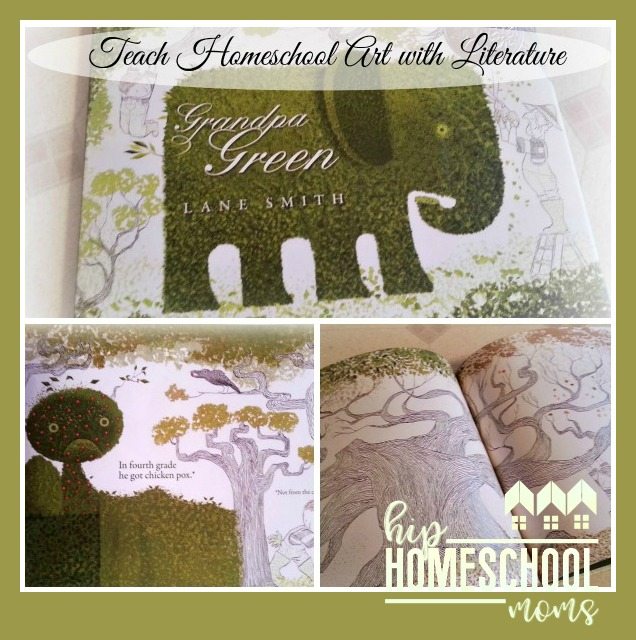The Important Difference Between Fine Arts and Crafts
As a homeschool mom, especially if you don’t consider yourself artistic, you may be wondering what’s the difference between fine arts and crafts. Aren’t they the same thing?
The answer is no. They are indeed related and even overlap now and then. But the essence of fine arts is “a product which is appreciated primarily or solely for its imaginative, aesthetic, or intellectual content.” Now some “crafty” projects may indeed qualify, especially where license is given for creativity. This can make things extra confusing.

Note: In this article, we’ll cover what makes a course or project “qualify” as fine art. It’s important to note that the fine arts include dance, music, and much more. However, for the sake of simplicity, I will focus on the visual arts in this article.
Looking for resources on how to teach art in your homeschool, art project ideas or homeschool art curriculum? You’ll find additional articles on how to homeschool art at the end of this article.
What is the Difference between Fine Arts and Crafts?
Crafts offer a project-based approach.
Crafts often have a project-based approach. Sometimes the entire focus is to create the same project, the same way, each time. Even though we want our children to use their imaginations and be creative, there IS a time and place for a project-based approach like this. For example, a planned craft offers the opportunity to follow instructions properly and practice many other specific skills. However, the content and (often pre-cut) materials can offer little opportunity for the creative process–which is an essential part of fine arts instruction.
Fine Arts focus on the creative process and creative intelligence.
Fine arts instruction focuses on technique, expression, and style, rather than the end product. Have you ever heard the phrase, “Process not product”? This phrase comes out of the understanding that true art is expression. Yes, skills and techniques are acquired, but in the end the process is equally important. So, of course a goal is that artistic ability is developed but that the we shouldn’t over emphasize the end product, especially early on. While crafts can sometimes be creative, art education focuses on development of skills and the “artist’s eye.” It allows children a range of execution for a more free expression of creativity than craft projects can usually provide.
Every homeschool mom CAN teach a quality Visual Arts Program!
It’s my belief that every homeschool mom can teach a high quality visual arts program. Even if you feel you lack the interest, skill, and creative strengths, YOU CAN! (Just as surely as I can teach math!)
To do this you must:
- Include art appreciation. Expose your children to the masters. Give them a cultural and historical understanding of art. This inspires and educates and helps children to know what good art is. In the same way you would choose the best literature to use in your homeschool, select good art for art appreciation time. Work this into your homeschool life and routine.
- Provide excellent materials. I know that it can get expensive, but materials matter. Start small and build your homeschool art supplies over time. Make them quality materials. Many quality art supplies are affordable. Teach your children to care for them. One thing I have said over and over to my kids is,”An artist is only as good as his materials.” And it’s true. While it’s okay to be messy while in the process of creating art, everything should have a place, and all materials and supplies should be cleaned up and put away afterward. Materials will wear when being used; that’s a good thing, but they will last if cared for.
- Provide the resources. Art books, You Tube videos, endless curriculum, and so much more is out there to choose from. You may be surprised what your child will create with a few good resources placed within his grasp. Not considering yourself artistic isn’t really a good excuse anymore. You have access to so many good quality resources and instruction. Use them with your child or help your child access them. Think of yourself as a facilitator. Your child will do the rest. Later on, if it’s warranted, outsource for formal instruction.
Bridging the Gap: The Difference Between Fine Arts and Crafts
How do you teach fine arts? A project that you might consider a craft could sometimes be part of a well-rounded visual arts program. Here’s the key: teach with the goal of helping your child develop an artist’s eye. Encourage her creativity while helping her develop skills. I also like to include some art appreciation or subject integration in every unit and also some skills to focus on for the lesson. You may also find these phrases helpful when teaching your child:
These are good for art appreciation but can also be used for a child’s own project:
- What stands out to you?
- What do you like/dislike about it?
- How does it make you feel?/ What does it express?
This is good when a child doesn’t like his end product. It shifts the focus from disappointment to progress or learning experience:
- What would you do differently next time?
Read more about How I Teach Art and Build My Own Lessons or how I accomplish subject integration such as My Art Around the Ancient World Series ( Which is correlated with Story of the World Vol.1).
Do you do fine arts or craft projects as part of your homeschool? Why or why not? Do you have questions related to arts and crafts in your homeschool? We would love to hear from you!
Do you need other resources to help you teach art in your homeschool, art project ideas or even suggestions for homeschool art curriculum? Check out these other articles on how to homeschool art.










Excellant! As a homeschool mom with a BFA I completely agree it’s about the process of creating rather than the outcome.
Thank you Stephanie for explaining the difference between art and craft. I often struggle to put into words, the reason I prefer my children to have an “art lesson” rather than “make a craft”. You did that so well!
Yes! YES! I taught Fine Arts lessons for many years in a private group setting, and this was the BIGGEST struggle I had with parents. They were thinking their children would be doing arts and crafts, but what I taught was Fine Arts. Try as I might, I could not seem to help them understand the difference. I made need to reference it some time! 😉
We’re so glad you liked this article! Please feel free to reference this article any time. 🙂
Interesting post and good distinction. I must confess most talk of art gets me thinking in terms of the biography of the artist and the history of the time in which the piece was made (haha… yeah, you got me – history and biography buff here!) but I do have a daughter who is artistically and musically inclined.
Great differentiation! I teach about both in my homeschool, but I don’t think there’s anything wrong with emphasizing one over the other according to your own giftedness.